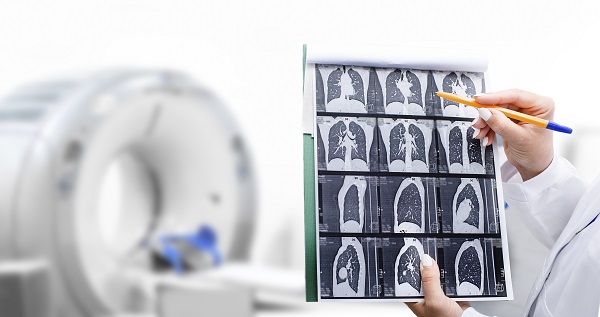
Lung cancer is notorious for its high mortality rate. However, active research on treatment improved the survival rate through targeted therapies and expanded the proportion of early diagnoses through the introduction of national cancer screening.
Multidisciplinary care has also shown remarkable results in lung cancer treatment. Various medical departments such as respiratory medicine, thoracic surgery, radiology, nuclear medicine, radiation oncology, and hemato-oncology work together from the beginning to fully recover patients.
Experts emphasize that solid multidisciplinary treatment can cure lung cancer, so patients need not despair.
■Determine stage through biopsy, bronchoscopy, etc.
Lung cancer is divided into primary lung cancer, which occurs in the lungs and bronchi, and metastatic lung cancer, which occurs when cancer in other organs metastasizes.
Primary lung cancer is categorized as non-small cell lung cancer and small cell lung cancer based on the size and shape of cancer cells.
For patients with suspected lung cancer, a biopsy is performed to determine the type and stage of lung cancer.
Representative biopsy methods include bronchoscopy performed by the Department of Pulmonology and percutaneous fine needles performed by the Department of Radiology.
Recently, bronchoscopy has been widely performed, which allows an accurate diagnosis of lesions by inserting an endoscope into the lungs.
Furthermore, introducing a navigation bronchoscope that shows its route in real-time, like a car navigation system, has enabled accurate access to areas that could not be reached in the past.
As CT has increased the diagnosis rate, compared to the past, surgery is more likely to be performed without a biopsy in many cases.
■Decide further plans such as treatment, surgery, or radiation/chemotherapy.
The departments of respiratory medicine, thoracic surgery, hemato-oncology, radiation oncology, and hemato-oncology collaborate to determine the order of ▲surgery ▲radiation therapy ▲chemotherapy depending on the clinical course and stage of the patient.
Some patients with stage 1 to 3 lung cancer undergo surgery for a complete cure. However, even if some patients are classified into stage 1, they cannot bear surgery due to reduced lung function or age. Then radiation therapy is sometimes applied.
Also, when the tumor size is too large to perform surgery, chemotherapy or radiation therapy may be used to reduce the tumor size to make it appropriate for surgery.
When patients with stage 3 lung cancer cannot undergo surgery but do not have metastases, they still have the option of a combination of radiotherapy and chemotherapy.
Incurable lung cancer patients with metastatic lesions can choose standard treatment drugs from among targeted therapies, immuno-anticancer drugs, and cytotoxic anti-cancer drugs after pathological examination and immunochemical examination.
Recently, when this treatment fails, or the latest targeted therapy is not available, patients can select the targeted therapies that are tailerd for each patient after identifying specific genetic mutations that cause lung cancer by using next-generation sequencing (NGS)
Thus, partnership with hemato-oncology, nuclear medicine, and laboratory medicine departments has become essential.
■Increase lung function through rehabilitation, breathing/coughing exercises, etc.
Pulmonary resection may cause the patients to have shortness of breath when breathing and difficulty walking even short distances as their lung function is debilitated compared to before surgery.
Therefore, patients should start rehabilitation treatment at an appropriate time after surgery to recover lung function.
Rehabilitation doctors, cardiothoracic surgeons, and physical therapists work together to perform breathing control exercises and coughing exercises to help discharge secretions from the body, such as sputum, in consideration of the patient's medical history, range of activities before surgery, and practice ability. Seoul Asan Medical Center, Samsung Seoul Hospital, Incheon St. Mary's Hospital, Gachon University Gil Hospital, Soonchunhyang University Bucheon Hospital).


